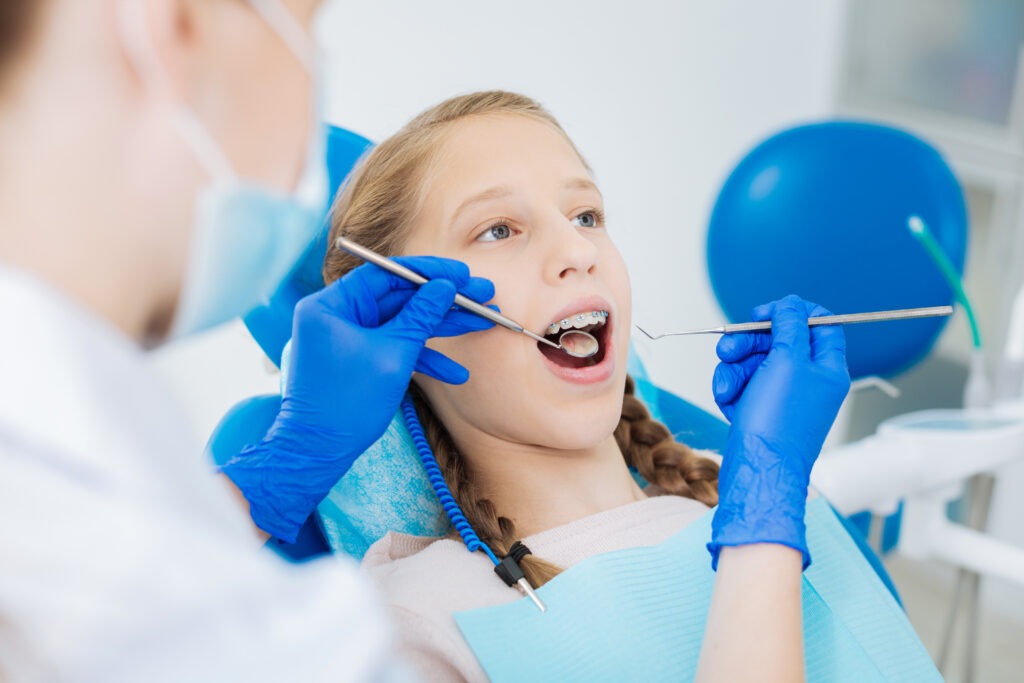Braces can be game-changers for your dental health, but they also come with unique challenges that demand special attention. In this essential guide, we’ll explore everything you need to know about keeping your teeth and gums healthy during your time with braces. From effective cleaning techniques to must-have tools and tips for avoiding pesky plaque buildup, we have the guide for you to achieve not just a straighter smile, but a healthier one too!
The importance of maintaining good hygiene while wearing braces
Getting braces can be a transformative journey toward achieving that perfect smile. However, along with the excitement of straightening your teeth comes a crucial responsibility: maintaining good oral hygiene. Braces create new challenges for your dental care routine, making it essential to pay special attention to cleaning techniques and habits. Neglecting proper hygiene while wearing braces can lead to plaque buildup, cavities, and gum disease—all things you definitely want to avoid during your orthodontic treatment.
At Ellis Orthodontics, we understand the importance of keeping your mouth healthy as you embark on this path toward a brighter smile. This guide will walk you through everything you need to know about braces and hygiene, equipping you with the tools necessary for success in both aesthetics and health! Let’s dive into how to keep that beautiful smile shining bright throughout your orthodontic experience.
What are braces and why are they necessary?
Braces are orthodontic devices designed to straighten teeth and correct bite issues. They consist of brackets, wires, and bands that work together to shift your teeth into the desired position over time.
Many people seek braces for cosmetic reasons. A beautiful smile boosts confidence and self-esteem. However, there’s more than just aesthetics at play. Braces can also address functional problems like misaligned jaws or overcrowded teeth.
A proper bite is essential for effective chewing and speaking. When teeth align correctly, it helps in preventing wear on enamel and reduces the risk of gum disease.
For children, teens, and adults alike, braces serve as a long-term solution to dental health concerns. By investing in orthodontic treatment now, you lay the foundation for a healthier mouth in the future.
How braces can affect oral hygiene
Braces create a unique challenge for oral hygiene. The brackets and wires can trap food particles, making it easier for plaque to build up. This increases the risk of cavities and gum disease if not managed properly.
Wearing braces often requires more time and effort in your dental routine. You’ll need to be meticulous when brushing around each bracket. Flossing becomes trickier but remains essential.
The surfaces of braces can also make teeth harder to clean effectively with regular techniques. Special tools, like proxy brushes or floss threaders, can help reach those tight spots.
Additionally, some patients may experience increased sensitivity during treatment due to changes in their mouth caused by the braces themselves. It’s crucial to stay aware of these challenges as you embark on your orthodontic journey at Ellis Orthodontics.

Tips for brushing and flossing with braces
Brushing with braces requires a little extra effort. Start by using a soft-bristled toothbrush to avoid damaging your brackets and wires. Angle the brush at 45 degrees towards the gum line for an effective clean.
Make sure to spend time brushing all surfaces of each tooth—front, back, and chewing surfaces. Don’t forget about those hard-to-reach areas around the brackets.
Flossing may feel tricky, but it’s essential for preventing plaque buildup. Use a floss threader or orthodontic flossers designed specifically for this purpose. Gently slide the floss between your teeth and under the wire.
Consider rinsing with an antibacterial mouthwash after brushing and flossing to keep your mouth fresh and help reduce plaque buildup further. Making these techniques part of your daily routine can lead to healthier gums and a brighter smile as you progress through treatment!
Proper cleaning techniques for different types of braces (metal, ceramic, Invisalign)
Maintaining oral hygiene varies slightly depending on the type of braces you’re wearing.
For metal braces, a soft-bristled toothbrush is essential. Gently brush around each bracket and wire at a 45-degree angle. Don’t forget to clean your gums thoroughly; they deserve attention too.
Ceramic braces require similar care but be cautious with your brushing pressure to avoid damaging the brackets. Flossing can be a bit challenging, so using orthodontic flossers or waxed dental floss can make this easier.
If you’re using Invisalign, cleaning is straightforward. Simply remove the aligners and rinse them under lukewarm water while brushing them gently with a soft toothbrush. This prevents buildup and keeps them fresh.
Each method has its nuances, yet all emphasize consistency in your routine for optimal results during treatment!
Foods to avoid when wearing braces
Wearing braces comes with a few dietary restrictions to ensure your orthodontic treatment goes smoothly. Certain foods can damage the brackets and wires, leading to delays in your progress.
Sticky candies like caramels and taffy are notorious offenders. They cling to the braces and can be incredibly difficult to clean off. Chewy textures make them even more problematic.
Hard foods pose another risk. Crunching on ice or biting into whole apples can lead to broken brackets, which means extra visits to Ellis Orthodontics for repairs.
Be cautious with popcorn too; those pesky kernels often sneak between wires, causing discomfort and cleaning challenges.
Finally, avoid anything overly sugary. Sodas or sweetened drinks increase the chances of cavities around braces where plaque builds up easily. Keeping an eye on your diet is key for maintaining that healthy smile!
Importance of regular dental check-ups during orthodontic treatment
Regular dental check-ups are crucial when you’re undergoing orthodontic treatment. These visits ensure that your braces are functioning correctly and that your teeth are moving as planned.
During these appointments, your orthodontist will assess the progress of your treatment. Adjustments may be made to improve effectiveness or address any concerns you might have. It’s a chance for professional monitoring of both alignment changes and oral health.
Additionally, dental professionals can provide personalized tips on maintaining hygiene specific to your situation. This guidance is essential in preventing potential issues like cavities or gum disease.
Remember, healthy teeth lead to successful results with braces. Regular check-ups help keep everything on track while fostering good habits throughout your journey toward a perfect smile.
Common problems with oral hygiene and braces and how to address them
Wearing braces can lead to specific oral hygiene challenges. Food particles often get trapped around brackets and wires, making it easier for plaque to build up. This can increase the risk of cavities.
One common issue is gum inflammation. Neglecting proper care might cause gums to become red and swollen. Regular brushing with a soft-bristled toothbrush helps reduce this problem significantly.
Another concern is bad breath, which may arise from inadequate cleaning. Rinsing with an antibacterial mouthwash after meals can help combat odors.
Staining is also a possibility, especially with ceramic braces. Avoiding dark-colored foods and beverages like coffee or berries will minimize discoloration.
If you notice any persistent issues, consult your orthodontist at Ellis Orthodontics right away for tailored advice on maintaining your smile’s health throughout treatment.

The impact of good hygiene on the success of orthodontic treatment.
Maintaining good hygiene while wearing braces is crucial for achieving the best results in your orthodontic treatment. Poor oral care can lead to plaque buildup, tooth decay, and even gum disease—all of which can hinder your progress. When you prioritize brushing and flossing effectively, along with regular dental check-ups, you’re setting yourself up for a healthier smile.
Every type of brace has its own cleaning requirements. Understanding these nuances allows you to keep your teeth and gums in excellent shape throughout your journey. By avoiding certain foods that can damage your braces or hinder cleanliness, you contribute positively to the overall success of treatment.
Good oral hygiene habits not only enhance the aesthetics of your smile but also support long-term dental health. Ensuring that you follow proper techniques will help reduce discomfort and potential complications during this transformative period.
Ellis Orthodontics emphasizes how essential it is to adhere to these practices—your commitment today leads to beautiful smiles tomorrow!
 Free Consult
Free Consult